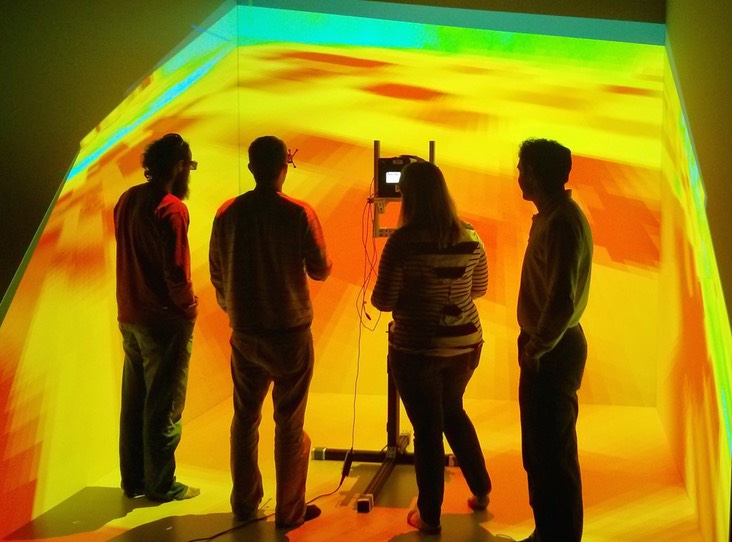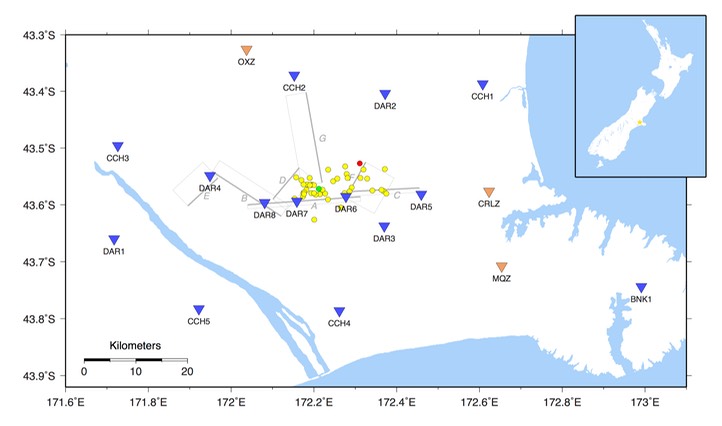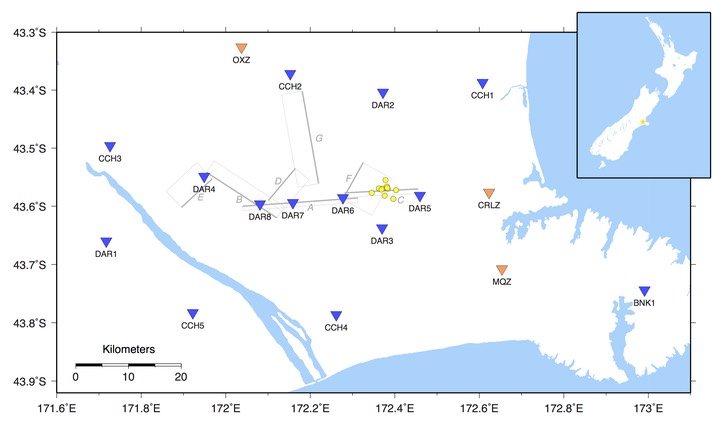
Graduate - M.S. Geology and Geophysics (in progress)
University of Wyoming
My research focuses on processing and analysis of an airborne time-domain electromagnetic survey that covered ~40 square km in the Snowy Range, WY. This summer, the geophysics team will spend time in the field verifying resistivity anomalies identified by the airborne data set with DC electrical resistivity techniques. Assuming that the anomalies are real, the next step will be determining the cause of the identified anomalies. We will use new techniques such as surface nuclear magnetic resonance and traditional techniques such as drilling to confirm the presence of water in certain subsurface locations. Additionally, I plan to look at spatial correlations between near surface resistivity values and terrain aspects such as slope or contributing area.
Right: James St. Clair, Jorden Hayes, Prof. Dario Grana, and I look at the 3-D resistivity model derived from the airborne survey in the Shell 3-D Visualization CAVE.

Undergraduate - B.A. Geology and B.A. Physics
Colorado College
The summer before my senior year at Colorado College, I was an intern for the Incorporated Research Institutions of Seismology for Dr. Ellen Syracuse at the University of Wisconsin - Madison. I attempted to locate repeating earthquakes in the Darfield Region, New Zealand, by using a specific cross-correlation. I spent the following academic year researching and interpreting my data set with the help of Dr. Megan Anderson at Colorado College.

My research culminated in a senior thesis, “Repeating Earthquakes in the Darfield Region, New Zealand”, which concluded that our method, due to cross-correlation window length, mostly identified similar, but not identical, earthquakes. Such events could still provide pertinent information about fault strength in the region.
Left: These two plots are two families of earthquakes that our cross-correlation code identified as potential repeating earthquakes. Note the consistency of the earthquake locations (yellow, green and red dots) in the top plot in comparison to the bottom. Further analysis suggests that our code may have been finding earthquakes with similar focal mechanisms relative to the earthquake location. Thus the earthquakes in the bottom plot may have very similar focal mechanisms.